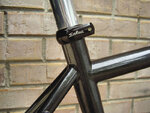Ralph
Active Member
I have been riding a lot of bikes. I like the Pedego City Commuter, but it is just too tall for me. It appears that the new Currie Zuma while not a city bike, will be a good option for island travel. But I have come across the eFlow Nitro which changes only a little for 2014 in the 2013 version on sale for $3,500 which is just $700 more than the Zuma.
The eFlow has so many features and the best of everything including hydraulic brakes, nice computer, intelligent pedelec plus TAG. I know the seating position is more forward, but wonder what you think of this option vs the Zuma.
The eFlow has so many features and the best of everything including hydraulic brakes, nice computer, intelligent pedelec plus TAG. I know the seating position is more forward, but wonder what you think of this option vs the Zuma.


